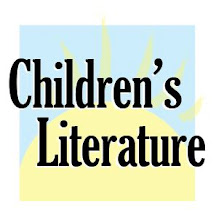I delight in learning history. Perhaps it was growing up in an historic city or the family stories my grandmother told me, or the way Sister Margaret made American History come alive in her high school class each day. It is most likely a combination of all three and much more. I now live in Rochester, NY. It, too, is rich in history. The Erie Canal made it the first American Boom town. Queen Victoria requested bread made of flour from Rochester. Susan B. Anthony lived here and her home was the national headquarters for the National American Woman’s Suffrage Association.
I became a docent at the Susan B. Anthony House a couple years ago, and find her story fascinating. How exciting it was to discover that she and another Rochesterian, Frederick Douglass, were good friends. Mr. Douglass and his family attended abolitionist meetings on Sunday afternoons at the Anthony farm. In her writings, Miss Anthony mentions that she worked with Harriet Tubman in getting a slave to Canada on the Underground Railroad. Rochester and the surrounding communities with their proximity to Canada were an integral part of the Underground Railroad. The more I read about the 1850s, the more I am fascinated by how the lives of so many famous people intersected.
I recently interviewed Rona Arato, author of Mrs. Kaputnik’s Pool Hall and Matzo Ball Emporium. (The interview will be in the CLCD March Newsletter.) As we talked, Rona told me about another book she had written entitled Working for Freedom: The Story of Josiah Henson. Like Harriet Tubman, he was born in Maryland and escaped slavery, and returned to the South to free his family and over 100 other slaves. He met Harriet Beecher Stowe who read Henson’s life story and wrote her own book based on what she had learned, Uncle Tom’s Cabin, which became the best-selling novel of the 19th Century and a catalyst for the Civil War.
Working for Freedom: The Story of Josiah Henson by Rona Arato is a compelling story and just perfect to share during Black History Month. The slaves who chose to escape on the Underground Railroad were all courageous. I am always pleased to discover another biography. Certainly one way to interest students in history is to give them some “edge of their seats” stories. Start with the most exciting story. Make history come alive. Then fill in with dates and details. It will be an unforgettable experience for you and for your students.
Here are some titles to help you present the Underground Railroad:
 American Archaeology Uncovers the Underground Railroad
American Archaeology Uncovers the Underground RailroadBy Lois Miner Huey
Marshall Cavendish Benchmark, 2010
Eliza's Freedom Road: An Underground Railroad Diary
By Jerdine Nolen
Simon & Schuster Books for Young Readers, 2011
Follow the Drinking Gourd
Story and pictures by Jeanette Winter
Random House, 1992
 Moses: When Harriet Tubman Led Her People to Freedom
Moses: When Harriet Tubman Led Her People to FreedomBy Carole Boston Weatherford; illustrated by Kadir Nelson
Hyperion Books for Children, 2006
Maritcha: A Nineteenth-century American Girl
By Tonya Bolden
Harry N. Abrams, 2005
Night Running: How James Escaped with the Help of His Faithful Dog

By Elisa Carbone; illustrated by E.B. Lewis
Random House, 2008
Traveling the Freedom Road: From Slavery and the Civil War through Reconstruction
By Linda Barrett Osborne; in association with the Library of Congress
Abrams Books for Young Readers, 2009
Working for Freedom: The Story of Josiah Henson
By Rona Arato
Napoleon Publishing, 2008
Sharon Salluzzo
CLCD












